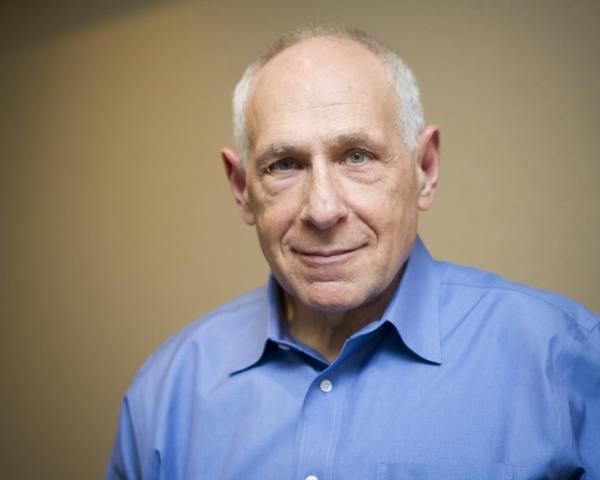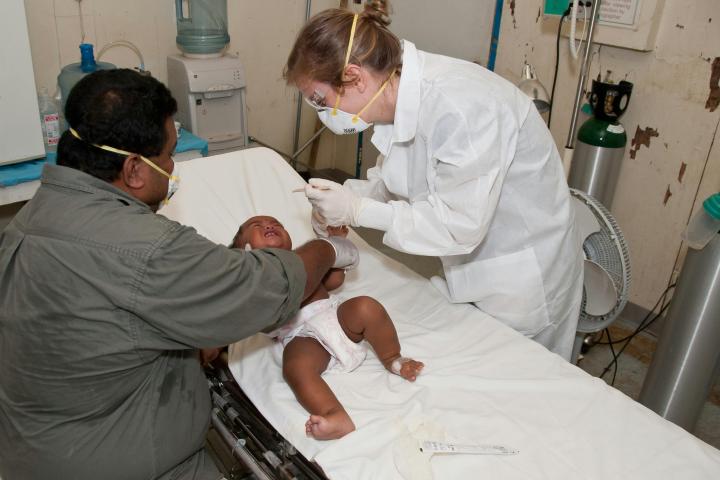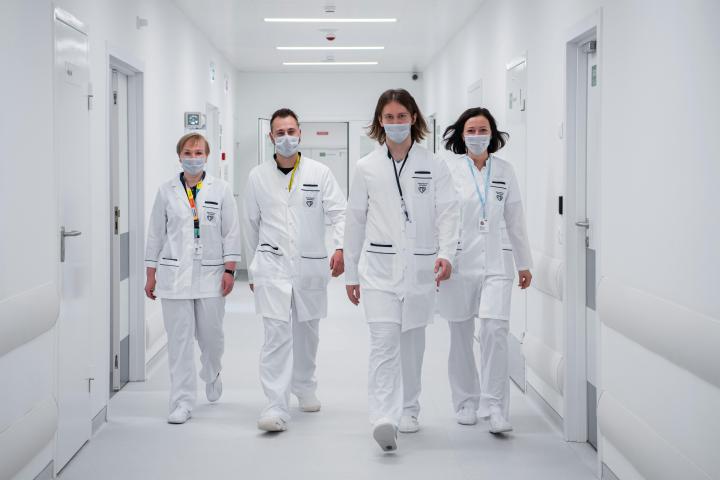
Healthcare Insights: Why are Healthcare Workers Wearing the Wrong Masks?
John August stresses the need for elastomeric respirators to best protect the health and safety of healthcare workers.
We live in perilous times.
On a macro scale, there has been a steady decline in the role and influence of the voice of workers in their workplace since the mid-1950s when unionization was at its high point (33% of workers belonged to unions then, while today that percentage is close to only 10%).
Sadly, there also has been a profound decline in the impact and effectiveness of the last great labor law reforms won in the 1970s with the passage of the Occupational Safety and Health Act (OSHA). This law and its regulations were designed to protect workers from hazards in the workplace. Like the labor law reforms of the 1930s which codified the right to organize and collective bargaining, OSHA came as a result of a struggle for safe working conditions in the dangerous workplaces of mining, manufacturing, transportation, and construction.
The law did not just “happen”.
Sadly too, specific safety and health standards under OSHA regulations took a long time to arrive in the healthcare workplace. It was not until the 1990s as a result of healthcare workers and their unions fighting for protection from blood borne pathogens in the tragic days of the first outbreaks of HIV, the virus that causes AIDS, that OSHA standards came to the healthcare workplace. Other important achievements in healthcare workplace safety came in the form of regulation for safe needle devices and safe places to treat TB patients, among others.
Experience has taught union leaders that enforcement of safe and healthy working conditions are best achieved through collective bargaining, worker training, and workplace-based enforcement of safe standards and procedures. While OSHA is a great law which promotes workplace training and enforcement, due to political and policy changes, enforcement has become cumbersome and untimely, and far too often, corrective action and enforcement through fines and other penalties are lacking.
Add to this erosion of capacity and power of OSHA a January, 2022 Supreme Court decision which might further chip away at OSHA. In this case, the Supreme Court struck down standards promulgated by OSHA which required COVID vaccination in workplaces of more than 100 employees. This would cover 80 million American workers.
And just in the last few weeks, observers have expressed new concerns about the influence of the Court on administrative law more generally after the decision in West Virginia vs. EPA. This decision casts a shadow on the ability of federal agencies to enforce or promulgate regulatory standards which traditionally have been left to the agencies based on their charter to do so from Congressional actions which created the agencies and their purpose.
Some very recent reporting in the news has brought these issues into sharp relief. Like so many makers of regulation and administrative law, the consequences can be “life and death”.
On July 3, 2022, the New York Times published a remarkable article about workplace safety in our time of the pandemic. Please take a few minutes to read it.
A Clunky, Reusable Mask May Be the Answer to N95 Waste - The New York Times (nymes.com)
This comprehensive article traces a long history of scientific research and practice (dating back to the early 1990s) which clearly shows that easy-to-use, mostly American made, and inexpensive elastomeric respirators have been the recommended protection from airborne pathogens for healthcare workers. Yet these highly effective respirators have been the rare exception in our healthcare work settings all through the COVID-19 pandemic!
By now, more than 2 and ½ years into the COVID-19 pandemic, many people are somewhat acquainted with the fact that healthcare workers paid a tragic and preventable price of illness and death.
Here are the facts about healthcare workers death in the U.S. (12 Months of Trauma: More Than 3,600 US Health Workers Died in Covid’s First Year | Kaiser Health News (khn.org). Here are some highlights from this research study:
“Two-thirds of deceased healthcare workers for whom the research project has data identified as people of color, revealing the deep inequities tied to race, ethnicity and economic status in America’s healthcare workforce. Lower-paid workers who handled everyday patient care, including nurses, support staff and nursing home employees, were far more likely to die in the pandemic than physicians were.
The yearlong series of investigative reports found that many of these deaths could have been prevented. Widespread shortages of masks and other personal protective gear, a lack of Covid testng, weak contact tracing, inconsistent mask guidance by politicians, missteps by employers and lax enforcement of workplace safety rules by government regulators all contributed to the increased risk faced by healthcare workers. Studies show that healthcare workers were more than three times as likely to contract Covid as the general public.
We rightfully refer to these people without hyperbole — that they are true heroes and heroines,” said Dr. Anthony Fauci in an exclusive interview with The Guardian and KHN. The Covid deaths of so many are “a reflection of what healthcare workers have done historically, by putting themselves in harm’s way, by living up to the oath they take when they become physicians and nurses,” he said.
Like most workplace deaths and injuries, the suffering of healthcare workers during the pandemic could have been largely prevented!
For this article, I interviewed Mark Catlin, former Director of Safety and Health for the Service Employees International Union (SEIU), the nation's largest healthcare union. Today Mark serves as a consultant to labor and industry on safety and health practices. He has spent many years studying the value of these respirators. Some of his observations along with highlights from the New York Times article are summarized here:
● The elastomeric respirator is far superior to the N95 respirator that we have heard so much about. Recall that when the COVID-19 pandemic first hit,
N95s were in short supply. Hospitals and nursing homes either ran out of the disposable masks quickly, and soon realized that because the masks were mostly manufactured in China, the supply chain for these masks stopped when they were most needed
● Even when N95s are available, for them to be effective they must be “fit-tested” for each individual employee each time they use one. Such fitting can take 20 minutes or more. This was impractical given the fact that the masks were being discarded after one or two uses.
● Many healthcare facilities then began “sterilizing” N95s which proved to be costly and time consuming.
● If N95s are not sterilized or are not fitted properly, they do not provide the 95% protection that the mask is supposed to provide. Instead workers will only have 50-60% protection which is hardly safe.
● By contrast, elastomeric respirators are fit to the user once, and once fitted, provide 99% protection from airborne pathogens. Workers are taught how to clean them and replace filters periodically, and when done so, the respirators can last up to a year or more.
● In the NY Times article, the elastomeric respirators are deemed inexpensive: it would cost $275 million to provide one to each of the nation's 18 million health care workers. Compare this to the $413 million spent on efforts to procure and “sterilize” N95s!
● The elastomeric respirators have been endorsed as the preferred protection for healthcare workers by the National Academy of Sciences
● The National Institute of Occupational Safety and Health (NIOSH) recommended respirators as the best protection for healthcare workers going back to 1992
If the facts and experience with the elastomeric respirator demonstrate it being far superior to N95s, why is it that the healthcare industry has settled into a renewed reliance on N95s, as indicated in the New York Times article?
Mark Catlin reminds us that there has been long standing resistance by the industry to respirators in the healthcare setting. Some of the resistance is based on a concern that patients would be afraid of the appearance of a healthcare worker in a respirator, or that the respirators inhibit communication, and that they are hard to keep clean and sterilized. These are problems that are all easily overcome through practice, dialogue, and modification as has been shown where they have been in widespread use (University of Maryland Medical Center, Allegheny General Hospital, and others).
When it comes to worker safety, the case has been made that elastomeric respirators are far superior to popular alternatives.
When it comes to supply chain challenges, they are made in the USA. When it comes to cost, they are cost-effective.
As with so many issues that become issues of conflict, parties do not take the time or make the effort to identify the real problem and collaborate to find real solutions. Instead they rely on past practice, outmoded information, tradition, and positions that they feel comfortable with. And in most cases the problem is not solved.
In this case the problem is the need to protect healthcare workers from deadly pathogens that they are exposed to in the course of carrying out their duties of providing care for their parents.
We have seen much conflict in labor settings as a result of the pandemic. Our Cornell ILR Labor Action Tracker confirms that organizing and workplace actions in healthcare have seen steady increases during the time of the pandemic. Staffing shortages and issues related to these shortages such as forced overtime, missed time off, stress and burnout have all been prominent and widely reported.
Lack of Personal Protective Equipment (PPE), such as gowns, gloves, protective eyewear, and most importantly safe and effective masks were at the top of the list of shortages in the early stages of the pandemic. These shortages contributed to justified anger, job actions, strikes, and protests.
And while some of the shortages were addressed, the consensus today is that the industry has largely settled into a reliance to provide N95 masks for healthcare workers as we inevitably await the next crisis, the next threat, the next pandemic!
Strikes and protests will continue as problems of workforce shortages and workforce safety continue.
We also know that fact-based problem solving is more than possible and a major feature of successful innovation in collective bargaining, which is a major theme of this column.
The presence of cost-effective, safe, and available elastomeric respirators ought to be one of many subjects that can influence successful collective bargaining in healthcare settings and beyond.
More than that, in a time when the courts and federal agencies are actively eroding the protections that were created out of workplace struggles, the need for intensified and innovative collective bargaining on these matters has also become a subject of life and death.
About the author:
John August is the Scheinman Institute's Director of Healthcare and Partner Programs. His expertise in healthcare and labor relations spans 40 years. John previously served as the Executive Director of the Coalition of Kaiser Permanente Unions from April 2006 until July 2013. With revenues of 88 billion dollars and over 300,000 employees Kaiser is one of the largest healthcare plans in the US. While serving as Executive Director of the Coalition, John was the co-chair of the Labor-Management Partnership at Kaiser Permanente, the largest, most complex, and most successful labor-management partnership in U.S. history. He also led the Coalition as chief negotiator in three successful rounds of National Bargaining in 2008, 2010, and 2012 on behalf of 100,000 members of the Coalition.




